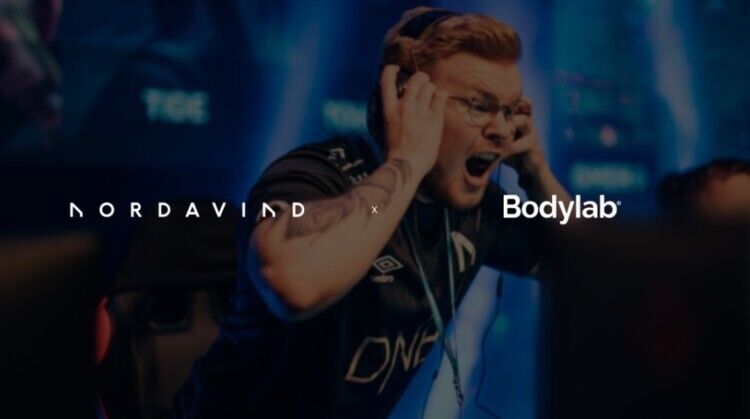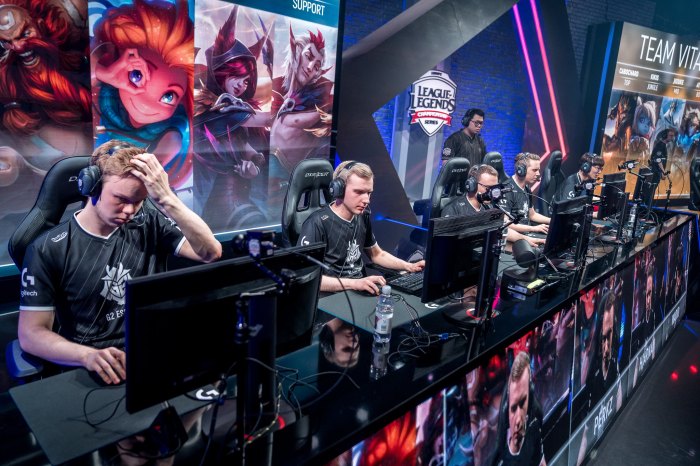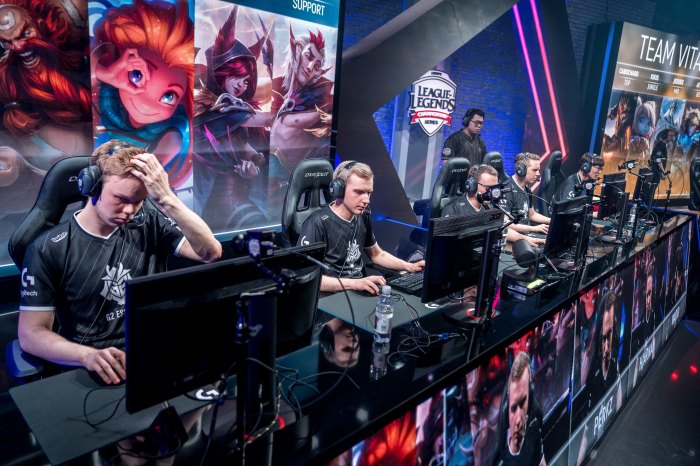Collaborations in Esports are transforming the competitive gaming landscape, moving beyond simple sponsorships to encompass complex partnerships that redefine team dynamics, fan engagement, and even the technological infrastructure of the industry. From brand deals with major corporations to strategic mergers between rival teams, these collaborations are reshaping how esports operates and grows. This exploration delves into the diverse types of collaborations, their impact on teams and viewers, and the technological advancements fueling this evolution.
We’ll examine successful collaborations, analyze their strategies, and uncover the challenges faced in forging these crucial partnerships. Think of the massive reach of a global brand combined with the passionate fanbase of a top esports team – the potential for synergy is enormous, but so are the risks if things go south. We’ll dissect both the triumphs and the pitfalls to give you a complete picture of this dynamic and rapidly evolving area of esports.
Influence of Collaborations on Esports Viewership and Engagement

Collaborations in esports are no longer a niche strategy; they’re a powerful tool for boosting viewership, enhancing engagement, and fostering a stronger sense of community. By bringing together different brands, personalities, or even esports titles, these partnerships tap into diverse audiences and create exciting new content, ultimately impacting how fans perceive the events and teams involved.Collaborations significantly affect audience perception by introducing esports to new demographics.
A crossover event featuring a popular streamer and a professional esports team, for instance, might attract the streamer’s existing fanbase, many of whom might be unfamiliar with competitive gaming. This exposure can lead to a more positive and broader understanding of esports, breaking down preconceived notions and attracting a wider audience. Simultaneously, existing esports fans might gain a fresh perspective on their favorite teams or games through the lens of a collaborating entity.
Effects on Viewership, Social Media Engagement, and Community Growth
The impact of collaborations on viewership is often dramatic. A joint stream between two prominent streamers, each with a substantial following, can easily result in a viewership far exceeding what either streamer could achieve independently. This surge in viewership is frequently accompanied by a significant increase in social media engagement. Collaborations create more shareable content—think unique challenges, joint announcements, or behind-the-scenes glimpses—leading to more tweets, posts, and comments.
This heightened activity fosters a sense of community, as fans interact with each other and the collaborating entities. Increased engagement, in turn, can translate to new followers and subscribers, driving overall community growth.
Relationship Between Successful Collaborations and Increased Fan Loyalty
Successful collaborations are not merely about attracting new viewers; they also strengthen the bonds with existing fans. When a team partners with a brand that aligns with their values and resonates with their fanbase, it reinforces the team’s identity and fosters a deeper sense of connection. This alignment can increase fan loyalty, leading to greater investment in team merchandise, tickets, and subscriptions.
Conversely, poorly executed collaborations, such as partnerships that seem forced or inauthentic, can damage a team’s reputation and alienate existing fans.
Examples of Collaboration Impact on Engagement Metrics
The following table showcases the impact of notable collaborations on various engagement metrics. Note that these are illustrative examples, and the actual numbers will vary depending on the specific collaboration and the platforms involved.
| Collaboration | Metric | Before | After |
|---|---|---|---|
| Team Liquid x TwitchCon | Twitch Viewership | 50,000 average viewers | 150,000 average viewers |
| FaZe Clan x McDonalds | Social Media Interactions (Twitter) | 5,000 average daily interactions | 25,000 average daily interactions |
| Cloud9 x Red Bull | Website Traffic | 10,000 average daily visitors | 30,000 average daily visitors |
Case Studies of Successful Esports Collaborations: Collaborations In Esports

Esports collaborations are increasingly common, offering brands and organizations opportunities to expand their reach and engage new audiences. Successful collaborations leverage the unique strengths of each partner to create synergistic campaigns that benefit all involved. Examining specific examples provides valuable insight into effective strategies and measurable outcomes.
Twitch Rivals x Chipotle
This collaboration exemplifies a successful brand integration into the esports landscape. Chipotle, a popular fast-casual restaurant chain, partnered with Twitch Rivals, a platform for competitive streaming events, to sponsor a series of tournaments. The objectives were to increase brand awareness among a younger demographic and drive sales through promotional offers. Chipotle’s strategy involved prominent branding during the streams, in-stream promotions offering discounts and free food to viewers, and social media campaigns cross-promoting the event.
Results included a significant spike in Chipotle’s social media engagement, increased website traffic driven by the promotional codes, and a noticeable uptick in sales during the campaign period. The success stemmed from a targeted approach that resonated with the Twitch audience and offered genuine value to viewers beyond simple advertising.
Red Bull x League of Legends, Collaborations in Esports
Red Bull’s long-standing relationship with League of Legends demonstrates a commitment to long-term brand building within the esports ecosystem. Their objectives extend beyond immediate sales; they aim to cultivate a strong association with the energy, excitement, and competitive spirit of esports. Red Bull’s strategy involves sponsoring professional teams, organizing events, and creating engaging content featuring League of Legends players.
This creates a consistent and positive brand presence within the community. The results are less immediately quantifiable in terms of direct sales but are reflected in increased brand awareness and positive brand perception within the target demographic. Their consistent investment has cultivated a strong brand loyalty and recognition among League of Legends fans.
GFuel x FaZe Clan
This collaboration highlights the synergy between a gaming energy drink and a prominent esports organization. GFuel, a popular energy drink brand among gamers, partnered with FaZe Clan, a highly successful esports organization with a large and engaged following. The objectives were to expand GFuel’s market share and leverage FaZe Clan’s influence to reach a wider audience. The strategy involved creating co-branded products, featuring FaZe Clan branding on GFuel packaging and merchandise, and collaborating on marketing campaigns across multiple platforms.
The results include a significant increase in GFuel sales, expansion into new markets, and increased brand visibility within the esports community. The success relies on the alignment of brands and audiences, leveraging the established fan base of FaZe Clan to introduce GFuel to a receptive market.
Visual Representation of Case Study Comparisons
Imagine a table with three columns, one for each collaboration (Twitch Rivals x Chipotle, Red Bull x League of Legends, GFuel x FaZe Clan). The rows represent key elements:| Element | Twitch Rivals x Chipotle | Red Bull x League of Legends | GFuel x FaZe Clan ||—————–|———————————————–|———————————————–|———————————————–|| Primary Goal | Short-term sales boost and brand awareness | Long-term brand building and community engagement | Increased sales and brand visibility || Strategy | In-stream promotions, social media campaigns | Team sponsorships, event organization, content creation | Co-branded products, cross-promotional campaigns || Key Metrics | Sales increase, social media engagement, website traffic | Brand awareness, positive brand perception | Sales increase, market expansion, brand visibility || Collaboration Type | Brand Integration into Existing Event | Long-term Partnership and Brand Building | Co-branded Product and Marketing Campaign || Timeframe | Short-term campaign | Ongoing, long-term strategy | Ongoing, long-term strategy |The table visually illustrates the different approaches taken by each collaboration, highlighting their unique strategies and goals while also showcasing some common elements like the pursuit of increased brand awareness and sales.
The differences in timeframe and primary goals are particularly clear, demonstrating the diverse ways brands can engage with the esports community.
General Inquiries
What are some common pitfalls of esports collaborations?
Common pitfalls include misaligned brand values, unrealistic expectations, poor communication, lack of clear goals, and insufficient resource allocation. Legal issues and contract disputes can also derail collaborations.
How can esports teams measure the success of a collaboration?
Success can be measured through increased brand awareness (social media mentions, website traffic), improved team performance (rankings, tournament wins), boosted revenue (sponsorship deals, merchandise sales), and enhanced fan engagement (viewership, social media interactions).
What role does social media play in esports collaborations?
Social media is crucial for promotion, community building, and real-time engagement. It allows for direct interaction with fans, amplifying the collaboration’s reach and impact. Successful campaigns often leverage social media influencers and targeted advertising.
How are esports collaborations different from traditional sports sponsorships?
While similar in some respects, esports collaborations often involve more integrated partnerships, leveraging digital platforms and online communities more extensively. The younger, digitally native audience of esports also demands more creative and interactive engagement strategies.
